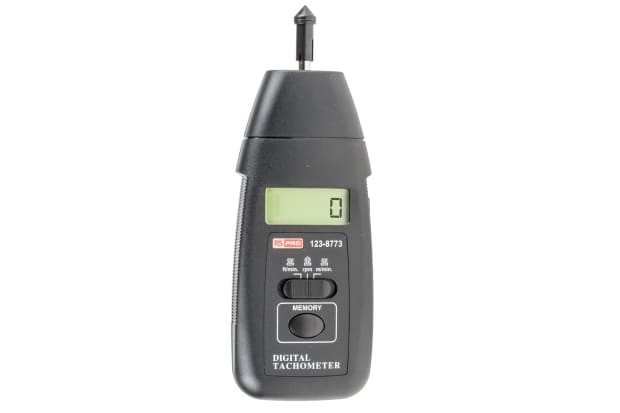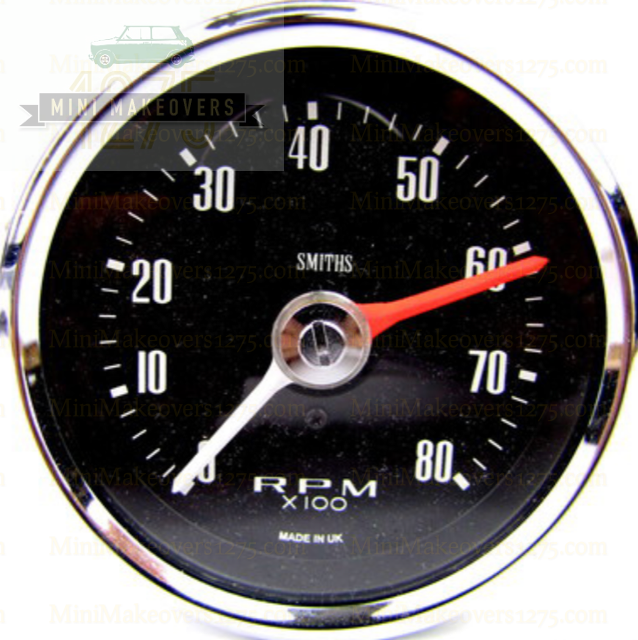Exactly how to Choose the Right Tachometer for Your Vehicle or Bike
Exactly how to Choose the Right Tachometer for Your Vehicle or Bike
Blog Article
The Significance of a Tachometer in Monitoring Engine Speed and Efficiency in Automotive Applications
In the world of automobile design, the tachometer stands as a critical instrument in the motorist's collection, giving a straight home window right into the inner functions of an automobile's engine. Beyond its function as a simple gauge of revolutions per min (RPM), the tachometer offers as an essential tool for fanatics and professionals alike, supplying real-time insights into engine performance and wellness.
Importance of Keeping An Eye On Engine RPM
Checking engine RPM, or revolutions per minute, is a critical aspect of auto upkeep and efficiency examination. Engine RPM straight associates with the speed at which the engine's crankshaft revolves, indicating exactly how swiftly the engine is running - tachometer. By keeping an eye on RPM, auto mechanics can assess the wellness of the engine, detect possible problems, and fine-tune efficiency. An irregular RPM reading might indicate troubles such as engine misfires, malfunctioning ignition system, or concerns with the gas delivery system. Continually high RPM analyses can suggest aggressive driving practices or the requirement for a greater gear change to improve fuel efficiency.
In addition, checking engine RPM is essential for efficiency assessment in auto racing and high-performance cars. In summary, checking engine RPM is not only important for finding concerns yet likewise for maximizing engine performance in various auto applications.

Advantages of Real-Time Data
In vehicle applications, real-time data plays an essential role in giving immediate understandings into the efficiency and problem of the vehicle. By continually checking different parameters such as engine rate, temperature, fuel consumption, and extra, real-time data offers numerous advantages that add to enhanced efficiency and safety when driving.
In addition, real-time information helps with performance optimization by providing immediate responses on driving routines and engine effectiveness. Vehicle drivers can change their behavior in real-time based on this info to attain better fuel economic situation and extend the lifespan of their automobile.

Additionally, real-time information plays a crucial duty in contemporary vehicle diagnostics, enabling technicians to promptly diagnose and address breakdowns. This causes decreased downtime, reduced maintenance costs, and ultimately, enhanced general vehicle reliability and long life (tachometer). By utilizing the power of real-time data, vehicle stakeholders can make educated choices that positively impact both the efficiency and durability of the car
Effect on Gear Shifts
Reliable gear changes in vehicle applications considerably influence total efficiency and driving experience. The tachometer plays a crucial role in maximizing gear changes by offering real-time engine speed information to the vehicle driver. When approaching the redline on the tachometer, it indicates the chauffeur to upshift to stop over-revving the engine and triggering possible damages. On the other hand, downshifting at the right moment can assist maintain the engine in its power band, ensuring responsive velocity when required.
In addition, the tachometer aids in accomplishing smoother equipment shifts, specifically in hands-on transmissions. By keeping track of engine speed, chauffeurs can carry out equipment changes at the optimum RPM range, reducing jerking activities and lessening wear on the transmission elements. This accuracy on duty modifications not just improves driving comfort yet also adds to fuel efficiency.
Enhancing Gas Efficiency
Given the important duty the tachometer plays in optimizing gear shifts for efficiency and engine health, it straight adds to taking full advantage of gas efficiency in automotive applications. By giving real-time feedback on engine rate, the tachometer assists chauffeurs in preserving the most efficient RPM array for fuel economy. When chauffeurs click continually keep an eye on the tachometer and adjust their motoring habits appropriately, they can prevent unneeded gas usage triggered by over-revving or hauling the engine.
In addition, the tachometer aids chauffeurs recognize the most fuel-efficient equipment to be in at any provided moment, preventing the engine from working tougher than required. In conclusion, the tachometer serves as an important device in improving fuel effectiveness by promoting optimal driving behaviors and recognizing locations for enhancement in the car's efficiency.

Making Best Use Of Engine Long Life
The tachometer's duty in keeping an eye on engine rate and performance is crucial in making certain the durability of automobile engines. Monitoring the tachometer enables motorists to remain within the suggested RPM variety discover here for their car, stopping unneeded strain on the engine and prolonging its life expectancy.

Conclusion
In verdict, the tachometer plays a crucial role in monitoring engine speed and efficiency in vehicle applications. By offering real-time data on RPM, it enables efficient equipment changes, enhanced gas performance, and maximized engine long life. This device is necessary for preserving ideal engine efficiency and making certain the total functionality of a i loved this lorry.
Report this page